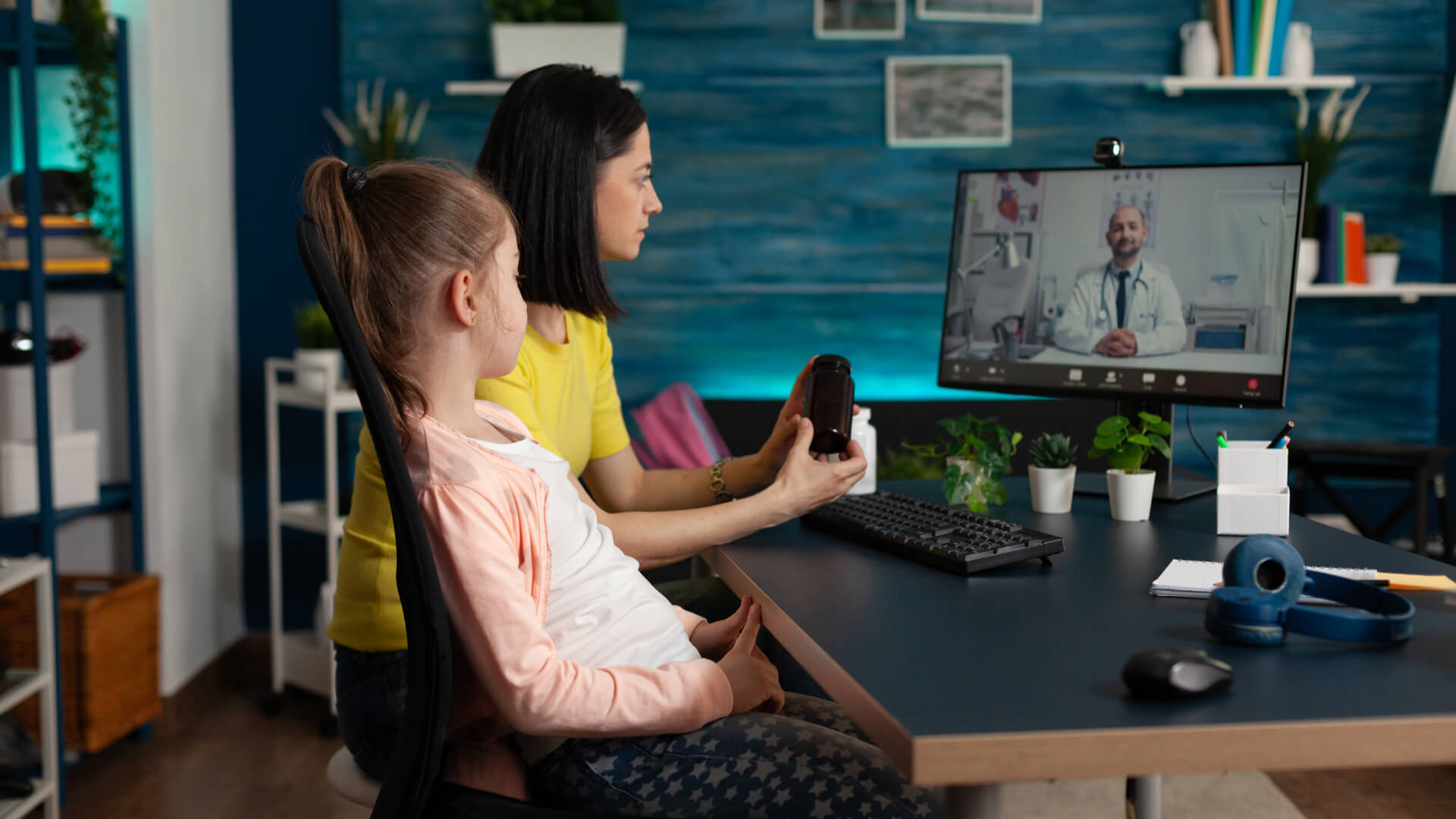
December 9 2023
8 min read

Jul
The COVID-19 pandemic has been a defining moment for the healthcare industry, challenging healthcare providers to swiftly adapt and embrace innovative solutions to ensure continuous patient care while mitigating the risk of virus transmission.
One such solution that has emerged as a game-changer is telemedicine, which offers remote medical activities and prompt medical services, providing patients access to essential healthcare without leaving their homes.
In this blog post, we will explore a comprehensive scoping review titled “Telemedicine solutions for clinical care delivery during the COVID-19 pandemic” to shed light on the effectiveness and versatility of telemedicine in addressing critical healthcare needs.
During the COVID-19 pandemic, researchers looked at 66 studies about telemedicine. These studies explored different ways to use telemedicine, including how it works, where it’s used, and what results it has. The studies showed that telemedicine can change how healthcare is given. By looking at what was learned, we can better understand how telemedicine can help healthcare.
A significant revelation from the review was the wide range of telemedicine functionalities that catered to different medical needs. Among the most common functionalities were counseling, diagnosis, and patient monitoring. The ability to offer these services remotely became invaluable during the pandemic, allowing healthcare providers to maintain continuity of care and offer essential medical guidance even amidst movement restrictions.
Telemedicine systems predominantly implemented synchronous communication methods, enabling real-time interaction between patients and healthcare providers. This synchronous approach allowed for immediate feedback and personalized care delivery. However, some studies also explored the use of asynchronous technologies, which allowed patients to access medical services and information at their convenience.

The success of telemedicine during the pandemic could not be achieved without the vast array of technological tools at its disposal. Studies highlighted the use of various technologies such as videoconferencing, phone calls, social media networks, specialized telemedicine platforms, smartphones, and video calls.
The integration of these technologies allowed healthcare providers to tailor their telemedicine solutions to meet the specific needs of patients and medical conditions.
The scoping review identified numerous positive outcomes resulting from implementing telemedicine solutions during the pandemic. Let’s examine the impact of telemedicine on various aspects of clinical care.
Telemedicine solutions emerged as a boon for optimizing healthcare resource utilization. By offering remote medical consultations and monitoring, telemedicine significantly reduced the strain on healthcare facilities and resources, particularly during periods of increased demand due to the pandemic.

The use of telemedicine led to substantial improvements in patient outcomes. Patients appreciated the convenience and accessibility of remote consultations, leading to increased visit rates and reduced no-show rates.
Moreover, telemedicine positively impacted patient satisfaction, as they felt more connected and engaged in their healthcare journey.
Telemedicine proved to be a powerful tool for healthcare providers, improving their workflow and overall satisfaction. Physicians found telemedicine efficient in diagnosing and managing patients, leading to improved physician satisfaction and enhanced diagnostic accuracy.
The flexibility of telemedicine was evident as it extended its reach to various clinical care settings. While most studies focused on outpatient care, the application of telemedicine was also observed in emergency care and inpatient settings, showcasing its adaptability across the medical landscape.

The majority of studies emphasized the efficacy of telemedicine in outpatient care delivery. Telemedicine offered convenience to patients by eliminating the need for travel and reducing waiting times, leading to improved access to healthcare services.
During the pandemic, telemedicine played a crucial role in emergency care settings. Telemedicine-enabled triage and remote consultations allowed emergency room physicians to assess and manage patients more effectively.
While the focus of telemedicine primarily lies in outpatient care, some studies explored its application in inpatient settings. Telemedicine facilitated remote consultations with hospitalized patients, ensuring continuity of care and reducing the risk of infection transmission within healthcare facilities.
The versatility of telemedicine was evident as it found application across various medical specialties and conditions, providing tailored care to patients with diverse healthcare needs.

The World Health Organization (WHO) reported a striking 25% increase in anxiety & depression-related issues during the Covid-19 pandemic.
In that backdrop, telemedicine emerged as a powerful tool for delivering mental health support and counseling remotely. Virtual consultations with mental health professionals offered a lifeline to those needing emotional and psychological support during times of home isolation.
Telemedicine played a vital role in obstetrics care during the pandemic. Prenatal and postnatal consultations, as well as high-risk pregnancy management, were conducted remotely, ensuring the health and safety of both mothers and newborns.
Telemedicine extended its reach to specialized medical conditions such as cardiac care, head and neck cancer management, chronic lung disease monitoring, neurology consultations, urology services, diabetes care, ophthalmology appointments, and more.
These telemedicine solutions addressed the unique challenges of specific medical conditions while providing personalized and effective care.
Telemedicine’s reach transcended geographical boundaries during the pandemic. Countries worldwide, including Italy, China, Singapore, the Dominican Republic, India, Taiwan, and the United Kingdom, embraced telemedicine solutions, tailoring them to their unique healthcare systems and needs.
The scoping review emphasized the need for further research and intervention to enhance the generalizability of findings and evaluate telemedicine in diverse clinical care settings. The potential for telemedicine’s post-pandemic adoption was evident, as its positive impact on patient and provider outcomes garnered attention worldwide.
Future research in telemedicine should focus on addressing methodological concerns and language bias, ensuring inclusivity and accuracy in the evaluation of telemedicine solutions. Rigorous studies that delve deeper into telemedicine’s requirements, successful implementation systems, and outcome measures will provide a more comprehensive understanding of its capabilities.
The success of telemedicine during the pandemic paved the way for its continued integration into healthcare systems post-pandemic. Governments, healthcare providers, and patients recognize the value of telemedicine in improving healthcare access and delivery.
The Veterans Health Administration, the largest integrated health care system in the United States, has expanded its use of telemedicine to include video visits with primary care providers, mental health providers, and specialty care providers. This has made it easier for veterans to access the care they need, regardless of their location.
The pandemic accelerated the global adoption of telemedicine, bringing it to the forefront of modern healthcare practices. As the world gradually emerges from the crisis, telemedicine stands as a beacon of hope, revolutionizing the way we deliver healthcare and laying the foundation for a more connected, efficient, and patient-centered future.
Please note that the insights and information provided in this article are based on the Original Source: Ganjali, R., Jajroudi, M., Kheirdoust, A., Darroudi, A., & Alnattah, A. (2022). Telemedicine solutions for clinical care delivery during COVID-19 pandemic: A scoping review. Frontiers in public health, 10, 937207 https://doi.org/10.3389/fpubh.2022.937207
Choose Confy as Your Telemedicine Solutions Provider
As you explore the realm of telemedicine, it’s crucial to partner with a reliable and efficient telemedicine solutions provider. Confy offers a white label telemedicine solution tailored to the needs of hospitals and healthcare providers.
With our fully integrated features, you can have your own branded mobile and web app, empowering you to deliver virtual care to your patients. We’ll handle the technology so you can focus on what matters most – delivering exceptional patient care. Contact us today to get started!

December 9 2023
8 min read

December 4 2023
8 min read

November 30 2023
8 min read

November 22 2023
8 min read